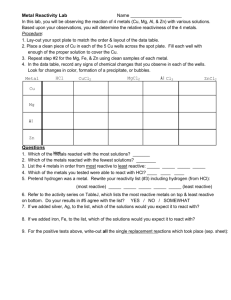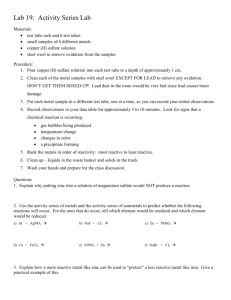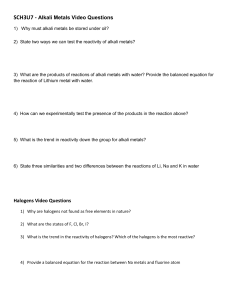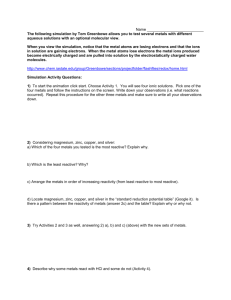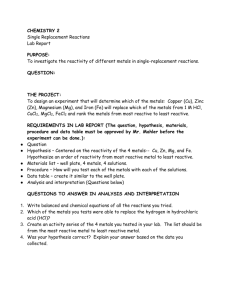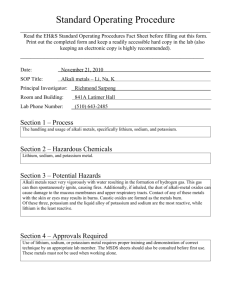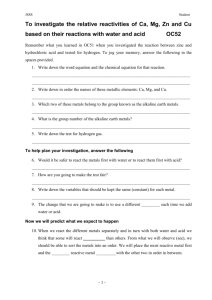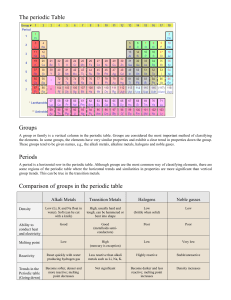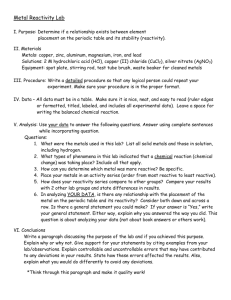7-2 Alkali Metal Properties
advertisement
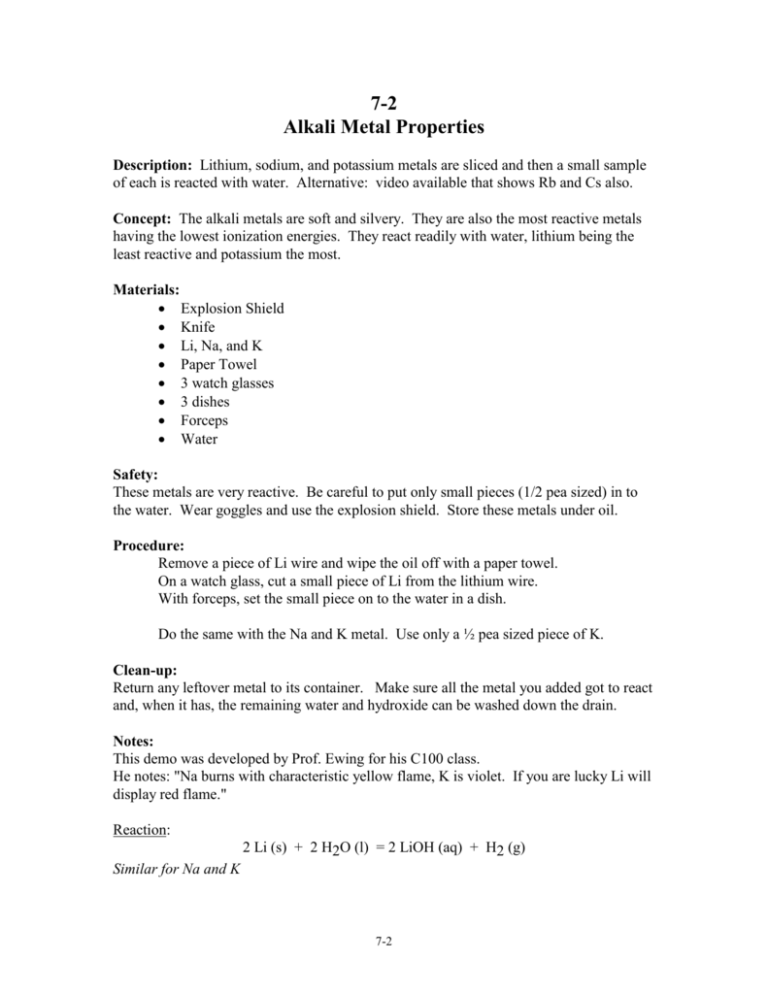
7-2 Alkali Metal Properties Description: Lithium, sodium, and potassium metals are sliced and then a small sample of each is reacted with water. Alternative: video available that shows Rb and Cs also. Concept: The alkali metals are soft and silvery. They are also the most reactive metals having the lowest ionization energies. They react readily with water, lithium being the least reactive and potassium the most. Materials: Explosion Shield Knife Li, Na, and K Paper Towel 3 watch glasses 3 dishes Forceps Water Safety: These metals are very reactive. Be careful to put only small pieces (1/2 pea sized) in to the water. Wear goggles and use the explosion shield. Store these metals under oil. Procedure: Remove a piece of Li wire and wipe the oil off with a paper towel. On a watch glass, cut a small piece of Li from the lithium wire. With forceps, set the small piece on to the water in a dish. Do the same with the Na and K metal. Use only a ½ pea sized piece of K. Clean-up: Return any leftover metal to its container. Make sure all the metal you added got to react and, when it has, the remaining water and hydroxide can be washed down the drain. Notes: This demo was developed by Prof. Ewing for his C100 class. He notes: "Na burns with characteristic yellow flame, K is violet. If you are lucky Li will display red flame." Reaction: 2 Li (s) + 2 H2O (l) = 2 LiOH (aq) + H2 (g) Similar for Na and K 7-2 Option: The ACS Video "Close-Up on Chemistry" includes a demo showing the properties of the alkali metals Li through Cs. The reactivity of Rb and Cs is definitely shown to be greater than that of Li, Na, and K. 7-2

